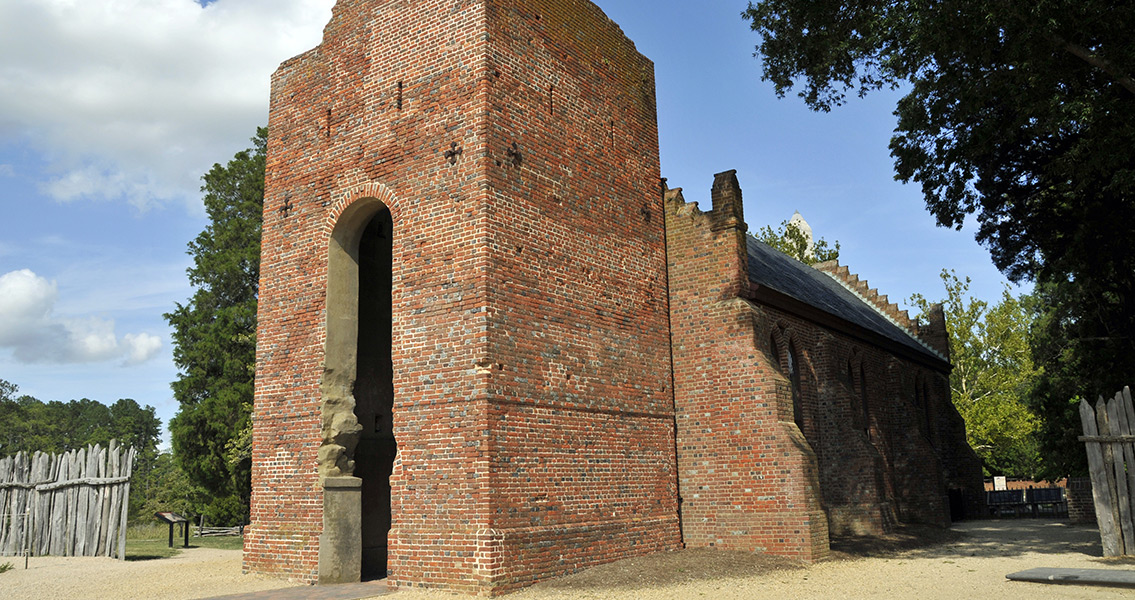<![CDATA[Beginning this summer, archaeologists at the Jamestown, Virginia preservation site (the earliest successful settlement in the Americas by the English) will begin excavating at the location of the Memorial Church, built in 1907. By necessity, they’ll also be investigating the remains of the First Church which was built in 1617, and the brick church which proceeded it, built in 1639. Research into the previous churches is necessary because the Memorial Church was built directly atop the cobblestone and brick foundations – foundations which are visible to tourists today through glass panels installed in the floor. Religion, and the Church of England specifically, played a central role in the lives of Jamestown settlers. Captain John Smith writes about the settlers who, after landing at Jamestown in 1607 constructed a rudimentary structure comprised of a sail hung from tree boughs, and benches which were no more than unhewed tree trunks where they would hold services. The first permanent church was a barnlike structure built in 1607, and then rebuilt in 1608 after it burned down. It was probably at the rebuilt church that Ann Burras, one of the first two women at the settlement, was married in 1608 and where her daughter was baptized. It’s also possible that this is the church where Pocahontas was baptized and married to John Rolfe. In 1610, when Lord de la Warr arrived as governor, he found the church in a sad state and had it improved and restored. When martial law was established by the governor in 1610 as a means of discipline for the men engaging in conflict with the native population, church attendance became mandatory. Services were conducted fourteen times a week. Sermons were preached two times on Sunday and once on either Thursday or Wednesday. Monday to Saturday two prayer services were held, in the morning and again in the evening. The services all followed the Book of Common Prayer. One of the Sunday services was followed with a reading of the laws, to ensure all of the settlers knew them. The minister also held a catechism class in the afternoon on Sundays. There were few opportunities for the men who worked in close proximity of James Fort to avoid the mandatory church services, and the Captain of the Watch was instructed to round up all persons not injured or sick and take them to the Church at the scheduled times. The laws even dictated a slew of punishments for anyone who failed to attend the services, and for the minister as well if he didn’t conduct a service. Missing one service cost a settler his daily ration of food. Further absences demanded more severe consequences, even death, although there aren’t any existing records of punishments related to absenteeism at Jamestown. The next church at the site was constructed in 1639 with a brick foundation placed directly on, and adjacent to, the cobblestone foundation of the First Church. The church tower adjacent to the First Church site is still standing today. The rest of the church was destroyed after being abandoned for a new church constructed several miles away. The last church, the site of the upcoming excavation and the church people see today, was constructed in 1907 by the National Society of Colonial Dames of America. This church is a place where visitors can see the past in the form of a cobblestone foundation from 1617 and a brick foundation from 1639, simply by looking down. Image courtesy of Wikimedia Commons user: Tony Fischer ]]>
Excavation of 1 Jamestown Church Gives a Glimpse Into 3
